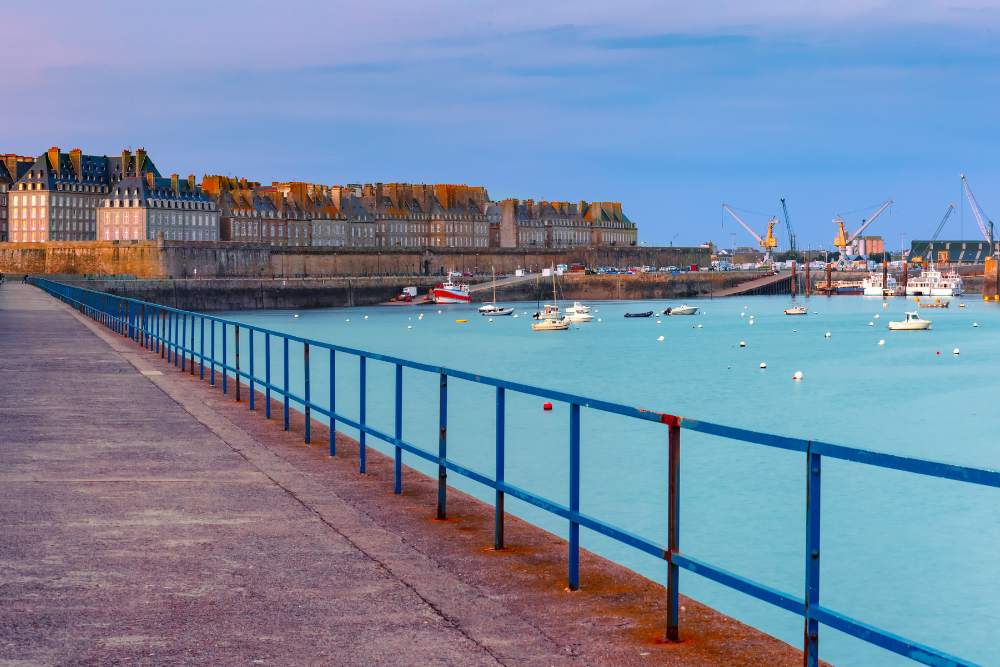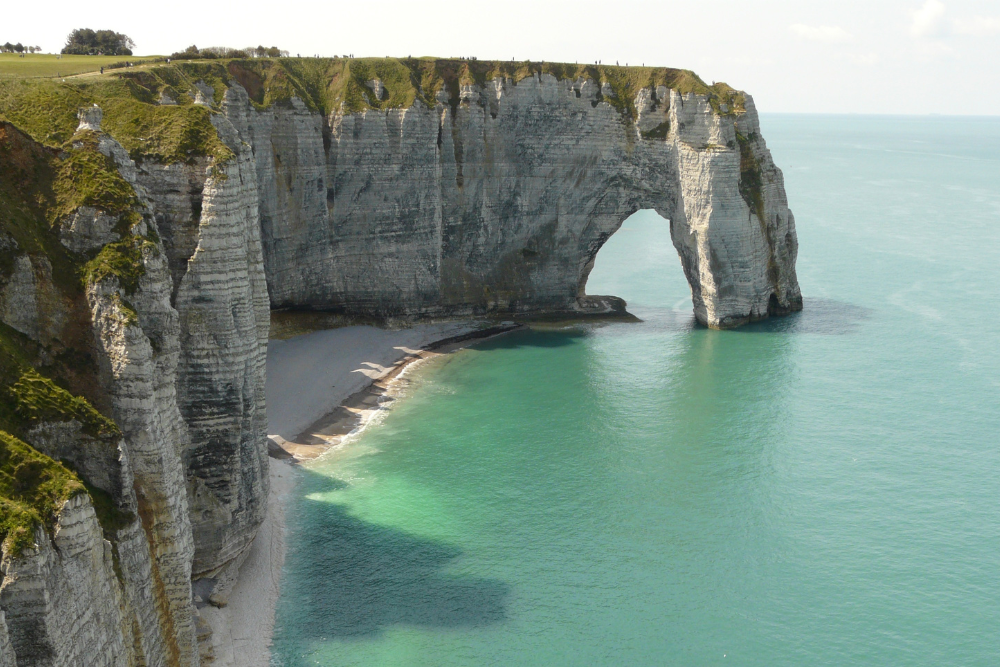Normandy, located in the northwestern part of France, is a region steeped in history, particularly due to its pivotal role in World War II. On June 6, 1944, known as D-Day, Allied forces launched one of the most significant and daring military operations in history: the Normandy Invasion, which marked the beginning of the end for Nazi occupation in Western Europe. Today, the region is home to several D-Day landing beaches that have become powerful symbols of bravery, sacrifice, and victory.
Visiting these historic sites is a deeply moving experience that allows you to honor the fallen soldiers and learn about the incredible events that unfolded on these shores. In this ultimate guide, we’ll take you through the most important D-Day beaches in Normandy, what to see, and how to make the most of your visit to these hallowed grounds.
1. Omaha Beach
Overview:
Omaha Beach, one of the five landing beaches of the Normandy Invasion, was the site of some of the most intense fighting on D-Day. The beach saw an attack by American forces from the U.S. Army’s 1st and 29th Infantry Divisions, facing stiff resistance from German troops entrenched in bunkers, pillboxes, and heavy artillery positions.
The beach was heavily fortified, and the landing forces were met with gunfire and mortar shells almost immediately upon arrival. Despite the overwhelming resistance, American soldiers eventually secured the beach, but at a high cost: over 2,000 American casualties.
Key Sites:
- Normandy American Cemetery and Memorial: Overlooking Omaha Beach, this cemetery is the final resting place for 9,388 American soldiers who died during the landings. The memorial also features a chapel, visitor center, and poignant statues commemorating the sacrifices made.
- Omaha Beach Visitor Center: This museum offers an in-depth look at the events of D-Day, with exhibits detailing the landings, personal stories, and artifacts from the battle.
- Waves of History Monument: This statue, located on the beach itself, honors the American soldiers who landed at Omaha Beach on D-Day.
Tip:
Make sure to take some time to walk along the beach and reflect on the bravery of the soldiers who fought here. The site’s historical significance and serene beauty make it a powerful and emotional visit.
2. Utah Beach
Overview:
Utah Beach was the westernmost of the five landing beaches, where U.S. forces (mainly from the 4th Infantry Division) landed with the goal of securing the Cotentin Peninsula and capturing the strategic port of Cherbourg. Although the beach was less heavily defended than Omaha, the landing still encountered resistance, and casualties were substantial, though not as severe as at Omaha Beach.
Despite challenges, the American forces successfully secured Utah Beach and moved inland, achieving their objectives. The beach is now famous for being the site where American forces experienced some of the earliest successes of the D-Day landings.
Key Sites:
- Utah Beach Museum: This museum is one of the best places to learn about the D-Day landings. The museum displays a collection of vehicles, weapons, and other memorabilia from the landings and features an informative multimedia presentation of the day’s events.
- The Utah Beach Memorial: This monument, which stands on the beach itself, commemorates the bravery of the soldiers who fought here.
- Bunker at Utah Beach: Visitors can explore the remnants of a German bunker, providing insight into the challenges the Allied forces faced during the landings.
Tip:
Utah Beach offers fewer crowds than Omaha Beach, making it a quieter and more reflective place to visit. If you’re interested in military history, the Utah Beach Museum provides a thorough and engaging experience.
3. Juno Beach
Overview:
Juno Beach was the site of the Canadian forces’ landing on D-Day. The Canadian 3rd Division faced fierce opposition from German forces as they stormed the beach, but despite the heavy resistance, they made significant advances and helped secure a foothold in Normandy. The Canadians suffered high casualties, but their success at Juno Beach was vital in the broader effort to push back the German forces.
Key Sites:
- Juno Beach Centre: The Juno Beach Centre is a museum dedicated to the Canadian soldiers who fought during the Normandy Invasion. It offers a powerful narrative of the Canadian contribution to the war effort, with exhibits on the soldiers’ experiences and artifacts from the landings.
- Canadian War Cemetery at Bény-sur-Mer: This cemetery is the final resting place of 2,048 Canadian soldiers who died during the landings. It’s a serene and reflective site to pay your respects.
- Juno Beach Memorial: Located at the Juno Beach Centre, this monument honors the sacrifices made by the Canadian forces on D-Day.
Tip:
The Juno Beach Centre is an excellent place to learn about Canada’s role in World War II and provides a personal look at the soldiers’ stories. Consider visiting both the museum and the nearby cemetery for a comprehensive experience.
4. Sword Beach
Overview:
Sword Beach was the easternmost of the five landing beaches and the target of British forces, including units from the British 3rd Infantry Division. The landing at Sword was part of the larger operation to liberate Caen, and while the British troops encountered stiff German resistance, they managed to secure the beach by the end of D-Day. However, the battle continued inland for several weeks as the Allies pushed toward Caen.
Key Sites:
- Pegasus Bridge Museum: Though not directly on Sword Beach, the Pegasus Bridge museum tells the story of the British airborne forces who landed behind enemy lines to secure key bridges in the region. This operation was vital in supporting the success of the landings at Sword Beach.
- Sword Beach Memorial: Located near the beach, this monument commemorates the soldiers who fought and died here. It’s a simple but powerful tribute to the sacrifices made by British and Commonwealth forces.
- La Brèche d’Hermanville: This beach is where the British forces made their initial landings. It’s a more tranquil part of Sword Beach and is perfect for reflection.
Tip:
Sword Beach is one of the less-visited beaches, which makes it a great place for a quieter and more intimate experience. Don’t miss the nearby Pegasus Bridge museum to add context to the airborne operations that supported the landing.
5. Gold Beach
Overview:
Gold Beach was the site of the British 30th Corps landings, with the goal of capturing the town of Arromanches and securing a link to the American and Canadian forces. The British encountered significant resistance from the German forces entrenched on the cliffs, but after fierce fighting, they successfully captured their objectives.
Key Sites:
- Arromanches 360 Circular Cinema: This unique circular cinema provides a moving and immersive experience about the D-Day landings and the Battle of Normandy. It’s an excellent way to understand the broader context of the invasion.
- Arromanches 360 Museum: This museum offers detailed information about the artificial Mulberry Harbors used to transport troops and supplies across the English Channel during the invasion. These floating harbors were a crucial part of the success of D-Day.
- Gold Beach Memorial: Located in Arromanches, this memorial honors the British soldiers who landed here on D-Day.
Tip:
Arromanches offers a variety of exhibits and memorials, making it an excellent location to learn more about the logistics and strategy behind the D-Day invasion.
Tips for Visiting the D-Day Beaches:
- Plan Your Visit: These sites can be spread out across Normandy, so it’s a good idea to plan your itinerary in advance, particularly if you want to visit all five landing beaches.
- Give Yourself Time: The beaches and memorials are best experienced at a relaxed pace. Spend time reading plaques, visiting museums, and reflecting on the immense historical significance of these sites.
- Guided Tours: Consider taking a guided tour for a deeper understanding of the history. Many local tour companies offer specialized D-Day tours that take you through the key sites with expert commentary.
- Respect the Sites: These beaches and cemeteries are sacred ground. Always maintain a respectful attitude and remember that many of those buried here made the ultimate sacrifice for freedom.
Conclusion
The D-Day beaches of Normandy are not just tourist destinations – they are places of reflection, remembrance, and respect. Each beach tells a unique story of bravery and sacrifice, making them a must-visit for anyone interested in World War II history. Whether you’re exploring Omaha Beach, learning about the Canadian contribution at Juno Beach, or taking in the beauty of Sword Beach, these sites offer a poignant reminder of the incredible events that unfolded here on June 6, 1944.












